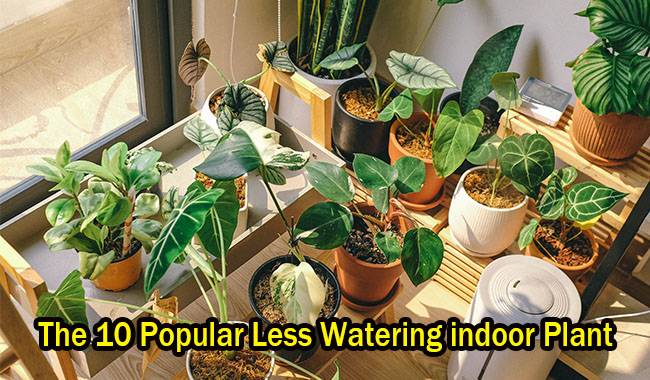
Mistakes in watering are the most common cause of houseplant problems. Fear of drought and giving your plants the best possible care can easily lead to overdoing it. But overwatering or watering too often can lead to nutrient deficiencies, air circulation problems, and rot. Only a few houseplants can tolerate overwatering. But even species that require consistent moisture requirements can’t cope with soil acidity. However, too little water is better than the opposite for most of our favorite plants. You will learn The 10 Popular Less Watering indoor Plant in ThumbGarden’s article.
Too much or too frequent watering prevents the substrate from drying out, destroys the structure and permeability of the soil, creates an ideal environment for the development of pathogenic microflora, and therefore leads to root and shoot rot. Standing water in pallets, poor drainage, and crusts with puddles on top are all equally dangerous to the soil.
The plant may not notice one or two slips, but the more and longer these problems persist, the greater the damage will be. Loss of firmness, discoloration, healthy leaves, and brown or black spots are fairly obvious symptoms. But it is much easier to tell from the soil itself (sour or musty smell, sometimes ammonia, sticking, dripping when squeezed).
For most indoor crops (with the exception of celandine and aquatic species), it is better to be underwater than overwatered. And, while a complete drought would only make cacti happy, the risks of overwatering the soil far outweigh the risks of more careful watering.
Bulbs, cacti, and succulents – from thistles and aloes to anemones and begonias – are notorious for their fear of overwatering. They will rot at the slightest excess of moisture. However, many “normal” houseplants can’t handle wet conditions either. Their low tolerance for excess water is not always evident – many plants prefer constant humidity and do not tolerate complete drought.
Let’s take a look at 10 of the most popular houseplants for which it’s best to water carefully.
Begonia
Everyone can find a plant for their taste in the Begonia variety. The luxurious foliage of the ornamental foliage varieties or the charming hats of the beautiful Begonia plant is different. But one thing that all varieties have in common is an aversion to overwatering. Overwatering these plants will kill them very quickly.
Begonia plants need to be watered very carefully. Their favorite steady soil moisture can only be achieved by constantly controlling their dryness. For “insurance” purposes, it is necessary to drain the tray immediately and dry 1 inch (2.5 cm) of soil on it until the next watering.
More Related: How to take care of begonias at home
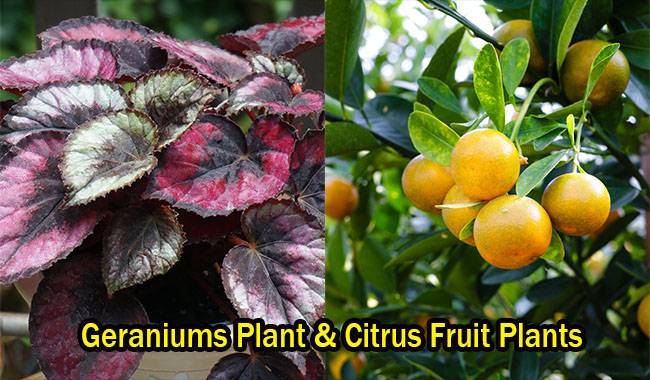
Citrus fruit plants
Small indoor orange and lemon plants and other fragrant favorites may seem long-lived and sturdy, but they cannot handle compressed soil and moist conditions in winter alone.
To enjoy a healthy canopy, shiny foliage, abundant flowers, and lots of fruit, you must pay close attention to the substrate and make sure there is no standing water at the bottom of the pot, even if you water very heavily in the summer. And avoid using cold water.
More Related: More Related: How to Grow Calamansi
Geraniums
Geraniums are back in vogue today thanks to their luxurious large-flowered varieties. However, the flashier the variety, the more sensitive it is to improper care.
Not only do Geraniums require frequent feeding and heavy watering, but they also need to be protected from waterlogging. Even if the water is drained from the trays in time, but the substrate is not allowed to dry out at the top, they will die from rot.
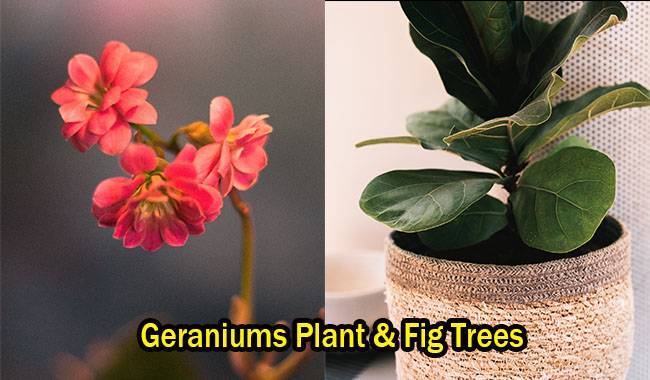
Fig trees
Reliable and economical, Fig trees are only good with moderate watering. Fig trees ficus, and other species are less afraid of dry soil than overwatering or watering with cold water. If the substrate is often overwatered, permeability will be compromised – a necessary condition for the proper growth of compact and giant ficus species.
To avoid mistakes, it is better to overwater and slightly dry the substrate between waterings, up to third in summer and half in winter.
More Related: Weeping Fig – Suitable for any Interior Decoration
Zebra-plant
It is hard to say what is more attractive about this rather large and lively shrub – wrinkled dark leaves with thick light veins or bright spikes with unusual bracts. Zebra-plant needs cool overwintering conditions, but problems cannot be avoided even in summer without moderate regular watering.
Standing water can be devastating to Zebra-plant, and if the substrate is overwatered, the only way to save the plant is to re-root the tips.
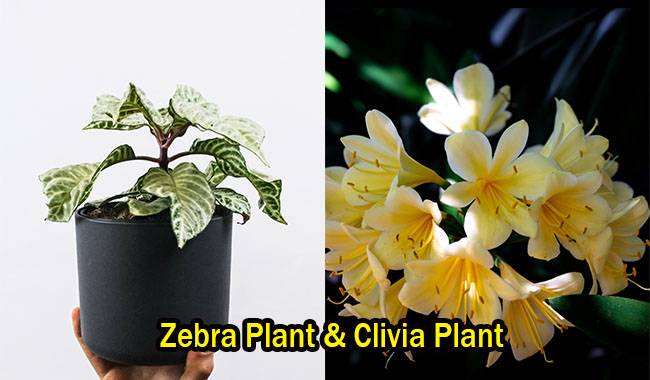
Clivia
Few things can compare to the flowers of Clivia. It is no coincidence that the older it gets, the lusher its flowers become, earning it the nickname Clivia lily. The lush tubular flowers bloom in bunches on the lush fan of ligulate foliage and require special care and conditions. However, the biggest mistake you can make with Clivia is not watering it carefully.
The plant does not tolerate standing water in the water dish. So drain off the excess water immediately afterward. And make sure the top 1-2 inch (2.5-5 cm) of soil is completely dry before the next watering.
Ornamental peppers
This compact, attractive ornamental pepper is sensitive to excess water and displays multi-colored fruits that change color as they ripen. A few too many waterings can kill the bush in just a few days.
You need to maintain a constant but lightly watered substrate for ornamental peppers. Standing water in the substrate is more dangerous than excessive soil drying.
More Related: How to Plant and Care Ornamental Peppers at Home
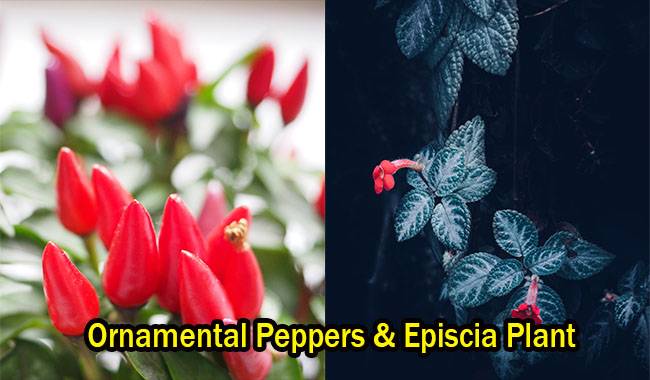
Episcia
Episcia seems to be one of the easiest houseplants to grow because it likes warmth and easy care. However, although it is sensitive to a completely dry substrate, standing water, and over-watering are more harmful to this amazing houseplant with its velvety foliage, slender, flexible shoots, and bright scarlet tubular flowers.
Episcia need light and even moisture to stay healthy. Any soaking through rough watering, standing water in watering trays, or overly extravagant watering will cause rot to spread rapidly to the roots and the shoots.
Poinsettia
With its top bracts, Poinsettia looks very striking indoors in winter but is rarely kept until the following year. However, even when grown as a seasonal plant, Poinsettia requires more care than is often assumed. Not only is it a matter of cool, steady light and proper feeding, but it also requires constant monitoring of the substrate’s moisture content.
Standing water is a major cause of leaf drops. Even slightly over-watered Poinsettia will lose vigor within a few weeks.

Camellia
This legendary indoor exemplary luxury flower with unmatched texture and beautiful dark foliage more than makes up for the difficulty of cultivation and the need to find a cool place to bloom. Although Camellia has ample moisture tolerance and a stable soil moisture level is recommended, it does not tolerate over-watering.
For Camellia, it is a good idea to let the topsoil dry out between waterings. And when Camellia is at rest — and flowering! — the substrate should be left to dry out half the time. You can check the moisture by hand or with a special indicator.
Other plants that don’t tolerate overwatering
Plants that are “better than overwatering” include Chinese Money Plant, clerodendron, briophyllum, calceolaria, philodendrons, cypress and other conifers, gardenia, hoia, ixora, jasmine, haemanthus, justicia, fremontia, andredera, isola, fatshedra, aspidistra, alocasia, anigozanthus, Allamanda, bellflower, cataranthus, periomyia, zamioculcas, vriesia, pachyra, pandanus, banana, myrtle, cryptanthus, diffenbachia, cordillines, yuccas and dracenas, calathea, cissus, exacum, gloriose, eucharis, pachystachia, senpolia, anthurium.
What should I do if I over-water my plants?
To prevent over-wetting the soil, remember the three basic rules of sensible watering
- Find out how much water the species needs and follow the watering recommendations (differences in developmental stages, how quickly the substrate dries out, watering methods, etc.).
- Always make sure the soil is dry before watering again.
- Check the water quality and temperature.
In any case of doubt, it is worth choosing the safest option – watering slightly more carefully and sparingly than otherwise.
While the consequences of overwatering can be dire, it is not irreversible. Overwatering will only cause the plant to “run amok” and die.
If watering mistakes are not constant, a simple watering correction can help. Before the next watering, let the soil dry more deeply, at least gently loosening the top layer, and place the pot on a desiccant material (sand, perlite, towel, etc.) to quickly “drain” the excess water from the lower layer of the substrate. And change the frequency after that.
Simple measures will not work if there are signs of root damage or moldy soil. Emergency replanting is difficult and often disastrous, but it is the only way out. After cleaning and inspecting the roots, trimming any damage, treating with a fungicide, and drying the plugs before planting into a new sterilized substrate is typical for any emergency transplanting.
If rot has reached the growing point and shoots, it must save the plant by propagation – re-rooting at the top or taking cuttings to produce healthy offspring.







